Spotlight Story
Making tracks for a better future
November 25, 2014
Los Angeles’ subway is turning out to be the engine that could. A little more than 20 years after the first riders hopped aboard the first leg of the subterranean system, the network is getting ready to make tracks into the Westside, taking center stage in an unprecedented effort that will double Metro’s rail miles over the next two decades.
The Purple Line subway, which now runs from downtown only as far as Wilshire Boulevard and Western Avenue, will extend to La Cienega Boulevard by 2013, with stops at La Brea Avenue and the Los Angeles County Museum of Art, where officials recently held a ground-breaking ceremony to celebrate the coming of the line.
Funded in large part by Measure R—the half-cent sales tax approved by county voters in 2008—Los Angeles’ “rail-volution” heralds the region’s transition from smog-choked autopia to transit-friendly metropolis.
“It’s an amazing attitudinal shift,” said Art Leahy, Metro’s CEO. “Well into the 1980s people would say, as regards rail, ‘We don’t need that—this is not New York and it’s not Chicago.’ Well, you don’t hear that anymore.”
The Purple Line Extension is one of five major rail projects that are currently under construction, along with Phase 2 of the Expo Line, the Gold Line Foothill Extension, the Crenshaw/LAX Line and the Regional Connector. When fully built, the projects will add 37 miles of track and 30 stations, reaching destinations including Santa Monica, Little Tokyo, Beverly Hills, Azusa and Watts.
At the Los Angeles County Museum of Art groundbreaking ceremony, officials extolled the project’s benefits for transit riders and the community at large.
“It’s going to help people get where they need to go, cut traffic and boost our economy,” said Los Angeles Mayor Eric Garcetti. “Tens of thousands of jobs will be created because voters said, ‘We want to get this done.’ ”
Supervisor Zev Yaroslavsky called the occasion an “historic day for the Westside,” noting that the area has not seen mass transit for decades—since the demise of the fabled Red Car network. He also said that the traffic-plagued Wilshire corridor—home to popular destinations such as LACMA, the La Brea Tar Pits and UCLA—was the best place to get the most possible riders for the new line.
“It’s the densest corridor outside of downtown,” Yaroslavsky said. “I believe we’ll have over 100,000 people riding this line within a year of its opening.”
The Purple Line extension project is broken into three sections with a projected total price tag of $6.3 billion, from a mix of federal and local funds, including half from Measure R. When completed, riders will be able to get from downtown L.A. to Westwood in just 25 minutes. The first 3.9-mile segment of the subway, with stations at Wilshire/La Brea, Wilshire/Fairfax and Wilshire/La Cienega, is expected to be completed in 2023. The full extension will have additional stops at Rodeo Drive, Century City, UCLA and the Veterans Administration Hospital and is projected to wrap up in 2035.
The Westside doesn’t have to wait for the subway, however, to get its next rail infusion. Phase 2 of the Expo Line is on track for completion by the end of 2015. The line will bring trains to within blocks of the Pacific Ocean, ending at 4th Street and Colorado Avenue in Santa Monica and opening up transit options for millions of L.A. County visitors and residents. The beneficiaries will include Eastsiders like Metro’s Leahy, who lives in Pasadena. “I don’t go to the Westside often, even though I like the Westside, because it’s so hard to get around,” Leahy said. “It just takes forever to drive anywhere.”
The current rail expansion is the biggest of its kind anywhere in the United States, and transit advocates hope it will whet the public’s appetite for more. Plans for a new ballot measure that could fund additional projects are already in the works. While it’s too soon to predict what those plans will include, L.A.’s transportation makeover is already well underway.
L.A. County’s modern-day rail journey began in 1990 with the opening of the Blue Line, street level light rail that extends from downtown L.A. to Long Beach. Over the next decade, the Red and Purple subway lines opened in phases, connecting downtown to Koreatown, Hollywood and the San Fernando Valley. Meanwhile, the Green Line linked Norwalk and Redondo Beach in 1995. Additional lines have opened since then, including the Gold Line to Pasadena and, most recently, the first section of the Expo Line to Culver City in 2012.
Posted 11/25/14
The amazing spider woman
October 17, 2014
Cat Urban is L.A. County’s very own spider woman. You won’t find her swinging from tall buildings to fight crime, but she just might help you feel a little safer at night.
As supervisor of invertebrates at the Natural History Museum, it’s Urban’s job to manage all things creepy and crawly—including the orb-weavers that are currently stretching their spiral-shaped webs across the spider pavilion.
Fear of spiders is said to be the most common phobia in the world (look no further than Halloween decorations and Hollywood movies for confirmation), but Urban says the creatures are misunderstood.
“They don’t want anything to do with us,” Urban says. “They’re more like ‘I’m going to run away from this giant monster that ran into my web.’ ”
The orb-weavers in the pavilion are technically blind, so they can’t see people and they don’t detect them as prey. As a rule, spiders also need to conserve their venom to anesthetize prey—it takes a lot of energy to produce. So it’s a fair bet that they will avoid wasting it by biting humans or other creatures they can’t consume.
On the other hand, the eight-legged creatures are an important part of our ecosystem and the food chain, serving as meals for reptiles, birds and amphibians. And their own dining habits are something to applaud.
“They eat a ton of bugs,” Urban says. “The world would be overrun with flies and mosquitos if we didn’t have orb-weavers; they are essential to our livelihood on the planet.”
That usefulness notwithstanding, people frequently get so creeped out that they have to make an early exit from the pavilion. Even Urban’s older brother is “petrified” of spiders—a major motivating factor behind her interest in the creatures, which began when she was a 12-year-old in Texas.
“There was this special place right across from my house where they were everywhere,” Urban said. “It was this huge community of nephila—they’re the ones that make the big webs that are always right across the path when you’re jogging or biking.”
Urban spent six years at the Smithsonian Institution in Washington, D.C. before moving to Los Angeles. One of the main reasons she came was the spider pavilion, which she said is the only one of its kind in the world.
The pavilion is open daily from 10 a.m. to 5 p.m. until November 2. Entrance is $5 for adults and $3 for children, in addition to general museum admission. Advance reservations are recommended.
Those brave enough to enter will be treated to a dazzling display by hundreds of orb weavers, from the Giant Wood Spider, which builds webs that can measure up to ten feet in diameter, to Golden Silk Spiders, whose yellow webs contain silk that’s as strong as steel. Other arachnids such as tarantulas, wolf spiders and jumping spiders are showcased in a newly-redesigned indoor exhibit adjacent to the pavilion.
Urban and her fellow museum workers will be on hand to educate the public and answer any spider-related questions. Each morning they must adjust the visitors’ path through the pavilion to accommodate new webs that were built overnight, and they also deliver fresh meals like crickets, blowflies and roaches directly to the spiders’ webs.
While Urban has no qualms about letting a spider the size of a bread plate crawl up her arm, she’s not completely fearless—zombies, she says, give her the heebie-jeebies. Which is a much more rational thing to fear, of course.
Posted 10/17/14
A tribute big as the Ponderosa
October 9, 2014
After years of navigating enough obstacles to prompt the patriarch on TV’s Bonanza to yell, “What in tarnation is going on down there?” Los Angeles County is poised to finish upgrades at Dan Blocker Beach in Malibu, though on a more modest scale than initially envisioned.
The $5.5-million project at 26200 Pacific Coast Highway included purchasing a sliver of land above the mile-long beach, where a scenic overlook is now being constructed, complete with picnic areas, parking spots and restrooms. The site also will feature, for the first time, a bronze plaque funded by fans and honoring the actor who played Hoss Cartwright on one of the longest-running and most beloved series in television history.
The overlook area will not provide direct access to the beach that bears Blocker’s name. Not only is the bluff extremely steep—30 feet high in some places—but the beach area directly below is too rocky for general use. However, beachgoers can walk onto the sand by entering at more accessible points north or south of the new overlook. Those new access ways also are being improved as part of the project.
The project should be substantially completed in time for a dedication ceremony on Nov. 14.
The late actors Michael Landon and Lorne Greene, who rose to fame as Little Joe and Ben Cartwright on Bonanza, bought and donated the beach to the state of California in 1979.
It was their way of honoring their costar and friend Blocker, after his untimely death at age 43 from a pulmonary embolism following what should have been routine surgery.
The state handed the beach over to the county in 1995.
It was designated “for public park and recreation purposes” but the public didn’t get much of a chance to enjoy it because neither the state nor the county could afford to install amenities.
In 2004, the state Coastal Conservancy awarded the county $700,000 to make the beach more accessible, but that covered only half of the price tag for improvements mandated by the Americans with Disabilities Act and various local zoning codes. The grant ended up being diverted to other, more shovel-ready projects.
Malibu City Council members, frustrated with the slow pace, sought to take over the project in 2011. But the county, which was shouldering the price tag for renovation, refused.
With no safe way to access the beach from the bluff, authorities erected an unsightly chain-link fence that discouraged, rather than encouraged, visitors.
“When we started, the site was empty,” said county Department of Public Works project manager Salim Sioufi, who oversaw the construction. “There was nothing on it.”
“Now, we’re building an area where people can sit and look at the ocean,” he added. “It’s going to be beautiful.”
The county eventually cobbled together funding from various sources, including money from the 3rd Supervisorial District, to build a space offering stunning views of the coast, picnic tables and trash receptacles, restrooms with an underground wastewater treatment system, and a parking lot with 15 spaces.
“The bluffs are very steep, so it was a very difficult place to do construction,” said Carol Baker, public information officer with the Department of Beaches and Harbors.
“We wanted to provide safe, accessible and beautiful open space but we also needed to appropriately address the challenges presented by the natural environment,” she added.
Although Bonanza, which ran for 430 episodes between 1959 and 1972, has long been off the prime time network schedule, it still has legions of fans. So does Blocker, who despite his intimidating physique—6’4”, 300-plus pounds—played the warm but gullible middle Cartwright brother who once mistook diminutive circus performers for leprechauns.
In real life, however, the Texas-born Blocker once worked as an elementary and high school English and drama teacher, and was the only member of the cast with a master’s degree. He also tried to pursue a Ph.D. until acting took up all of his time.
Carla Ledford, 56, has been watching the show ever since she was a child and continues to do so, when she’s not working in marketing for a university in Ohio.
She and fellow fans got the idea for a plaque after struggling to locate Dan Blocker Beach during a visit to Malibu in 2004.
“There was just wasn’t anything there,” Ledford said. “We drove up and down trying to find it when we finally saw a faded lifeguard tower where we could just make out the name ‘Dan Blocker Beach.’ ”
“I mean, it’s a nice beach, but…we just thought it needed something,” she added.
They took up a collection through the fan fiction website Bonanza Legacy and received donations from fans as far away as Australia, England, France, and the Netherlands.
Ledford said because she’s literally been waiting 10 years to see the plaque installed, she’s considering postponing foot surgery and flying from Ohio to California to attend the dedication ceremony.
“I’m seriously thinking about it,” Ledford said.
Posted 10/9/14
Time to grin and bear it for CEO
September 25, 2014
This is the story of Bill and the three bears.
Last Sunday afternoon, the county’s chief executive officer was pursing his usual weekend pasttime—terracing his sprawling, hilly backyard with bricks—9,000 of them , so far—when his wife bolted out of the house. She announced that three sheriff patrol cars were blocking the driveway and that officials from the state Department of Fish and Wildlife were there, too.
Why the commotion? A mother bear and two cubs had shimmied up an oak tree in front of Fujioka’s house in the tiny city of Bradbury, nestled at the base of the San Gabriel Mountains near Monrovia. They’d been spotted on a busy street in the area and were being guided back towards the mountains by authorities when the parched and hungry animals decided to hole up at Fujioka’s place.
“Holy smokes,” Fujioka exclaimed as he saw for himself what was unfolding out front.
Wildlife officials told Fujioka that because of the severity of the drought, the bears had wandered from the mountains looking for food and water. “It was sad,” Fujioka said. “The mother’s fur looked bad and the cubs looked malnourished.”
At one point, Fujioka said, he started walking towards the tree when the mama bear “started hitting the branches.”
“Back up!” a wildlife official told Fujioka. “She’s warning you. If you keep going, she’ll come down that tree and charge you.”
After more than an hour, the bears did climb down but quickly jumped Fujioka’s fence and high-tailed it into another tree, a birch that was even closer to the house. “From my bedroom window,” the CEO recalled, “I could look at the bear eyeball-to-eyeball.”
By now, the news crews had arrived, hoping for footage of the bears’ descent.
As they waited, a reporter for KABC-TV interviewed Fujioka, who admittedly was “as filthy as could be” from his backyard brick work.
Usually when he makes the news, Fujioka is seen unveiling the county’s budget or taking part in other official business. This time, his name was misspelled as “Fugioka” and there was no mention of his position with the county. He was just another neighborhood man in the news. And that neighborhood is no stranger to attracting media attention for its occasional bear visitors. A few years ago, one made headlines for taking a dip in a resident’s hot tub.
On Sunday, in the end, the bears waited out almost everyone—the deputies, the fish and wildlife people, even the news hounds. Everyone except Fujioka and his wife, Darlene Kuba. After more than two hours in the branches, at about 4 p.m. the trio inched down and literally hit the bricks, ambling across Fujioka’s prized, terraced backyard and then back into the hills—leaving Darlene as the lone chronicler of the moment. Here are some of her pictures of the bears on the lam:
Trouble at sea
September 18, 2014
A punishing heat wave sent thousands of people fleeing to the beach this week, but many who tried to cool off in the ocean found themselves in hot water instead.
The Los Angeles County Fire Department’s Lifeguard Division saved more than 1,000 swimmers and surfers swept up by rip currents and other hazards over a five-day period when temperatures peaked at 107 degrees in the San Fernando Valley.
This brought the lifeguards’ total number of rescues up to about 12,000 since January. That’s their third highest tally ever in a single year — with three months still remaining in 2014.
Acting Chief Lifeguard Steve Moseley attributes the spike to a rare confluence of factors: A surge in beach attendance driven by extended periods of unseasonably hot weather, more frequent occurrences of high surf and a warmer ocean.
“All of these contributing factors have combined to create one of the busiest years in recent memory for the Lifeguard Division,” Moseley said.
To date, beach attendance has hit 61 million — well past the 20-year average of 54 million and on pace to exceed last year’s 71 million.
“It’s been so hot inland that everybody’s coming to the beach, even on a Tuesday or a Wednesday,” said Ocean Lifeguard Specialist A.J. Lester. “And because ocean temperatures are warmer, everybody’s staying in the water all day long.” (Tips on staying safe on the beach are here.)
Jet Propulsion Laboratory climatologist and oceanographer Bill Patzert said swimmers and surfers have been particularly vulnerable to being swept away by rip currents, and falling into deep grooves on the ocean floor.
He explained several hurricanes and tropical storms spawned by El Nino conditions in the equatorial Pacific scored the ocean floor, leaving uneven contours.
“The county’s south-facing beaches have been hit with big waves, almost week after week,” Patzert said. “Hurricane Norbert is breaking up, but we have yet another one forming now.
“Because these tend to change the configuration of the ocean bottom,” he added, “people very easily can get into water over their heads in these rip currents.”
Lester said the county employs 200 full-time and 700 part-time lifeguards and has “needed every one of them.” He himself rescued 18 people in a single day last spring, including a pair of boogie-boarding teenagers swept away by rip currents.
“The sister was screaming blood-curdling screams because her brother had fallen off his board and, basically, he was drowning,” Lester said. “I wrapped them around my rescue can but a wave slammed us down to the bottom, and when we got back to the surface, we were all spitting up water.”
Moments after he brought the siblings ashore, he had to dive back in for yet another double rescue. “Then I returned to my tower and parked my truck, but before I could even dry off, we had to pull more people out,” Lester said.
“It’s gotten to the point sometimes when we’re going from one rescue to the next,” Lester said. Still, he added, “There’s nothing more rewarding than completing a rescue, coming back to the beach, and watching those kids run back to their parents, and they’re all hugging each other, and thanking us.”
Section Chief Chris Linkletter said lifeguards also have racked up 1 million “preventions.”
“This means we have prevented that number of people from either becoming rescues or getting into a hazardous situation,” she said.
Amid all the rescues, however, there also have been mishaps.
On Monday, a lifeguard driving a pickup truck back to his tower accidentally ran over a sunbather, who survived but sustained fractures and lacerations to her internal organs.
It was the second such accident this year. In May, another sunbather was hit by a county beach maintenance vehicle.
Posted 9/18/14
A peak accomplishment
September 11, 2014
Milt McAuley’s fingerprints are all over the Santa Monica Mountains. Soon, his name could be on one of the range’s most visible peaks.
Acting on a motion by Supervisor Zev Yaroslavsky, the Los Angeles County Board of Supervisors voted Tuesday to write the United States Board of Geographic Names in support of changing the name of Peak 2049 to “McAuley Peak.”
The motion is the latest boost to a campaign championed during the past several years by West Hills resident and avid hiker Coby King, who had long felt a special connection to McAuley. Before venturing onto a new trail, King would turn to McAuley’s landmark guidebook, Hiking Trails of the Santa Monica Mountains.
“Most hiking guides are really straightforward,” King said. “But his guidebook, you could hear his voice coming through in every hiking description. You could tell that the guy had a personality and that he loved the mountains.”
McAuley also authored and self-published other reference materials on the mountains, including a wildflower guide and a guide to the popular Backbone Trail, which transects the range from East to West and which he helped plot. McAuley’s books and advocacy for public acquisition of land in the Santa Monica Mountains drew scores of people to the area and generated a groundswell of support to protect the mountains from development.
Although King never met the conservationist, he said he did hike “just about every peak” in McAuley’s book. When the author died in 2008, King was moved to action.
“I felt like he deserved some kind of recognition for all that he had committed to the mountains,” King said. Out of all the hikes to peaks in his guidebook, “2049 was the only one that didn’t already have a name.”
The peak is situated right next to the Backbone Trail and is crested by a large sandstone rock visible for miles. King said the peak is an appropriate monument to a man whose work still looms over the mountains. Since applications to name geographic landmarks can’t be filed until five years after the person’s death, King, who serves as chairman of the Valley Industry & Commerce Association, used his government expertise to start building a case.
After securing the blessing of the McAuley family, he garnered support from elected officials and worked with environmental groups like the Sierra Club, which began calling the site McAuley Peak in their materials.
King is hopeful that the U.S. Board of Geographic Names will quickly approve the application so that the new designation will become official sometime next year. And that’s good news to the many friends and former associates of McAuley, who believe his contributions warrant the honor.
Jim Hasenauer met McAuley in the 1980s when he and some fellow mountain bikers were trying to convince local trail managers to allow them to use the trails. Some of the hikers were resistant, but McAuley—whom Hasenauer described as a gentle giant—was welcoming.
“He felt that people needed to experience the trails, sights, vistas, flora and fauna of the area and then we would appreciate it and die protecting it,” Hasenauer said, adding: “To go on a hike with him was like going to a graduate seminar in mountain ecology.”
Ruth Gerson, who worked with McAuley on the Santa Monica Mountains Trails Council and serves as the organization’s current president, said he was instrumental in naming trails and opening them up for public use. “He was a wealth of knowledge in the mountains,” Gerson said. “There was nobody that disliked him. And he could out-walk anybody—even in his late 70s.”
Bill McAuley, Milt’s son, said he’s never hiked the peak that could soon be named in his dad’s honor. But he certainly intends to hit the trail when, hopefully, McAuley Peak becomes a reality.
“I see the names in the Sierras and they’re all people who had something to do with the mountains,” Bill said. “He really did have a lot of influence.”
Posted 9/11/14
Rhapsody in blue
September 10, 2014
It was the kind of discovery that can rock a gem scientist’s world.
Eloïse Gaillou, an associate curator at the Los Angeles County Natural History Museum, started picking up social media chatter early this year about a 29.6 carat rough diamond found in South Africa.
She hardly imagined that just months later she would be on a team at the Smithsonian Institution conducting scientific tests on the rare diamond—now exquisitely cut to 12 carats and dubbed the Blue Moon for its exceptional color—let alone helping to host the super-stone’s visit to Los Angeles, where it will be on display in the museum’s gem vault from September 13 through January 6.
“We tweeted about it, we blogged about it, never thinking that it would come to us eventually,” Gaillou said.
The Blue Moon will join a collection of 240 colored diamonds called the “Aurora Butterfly of Peace” now on display at the museum.
“Putting those two collections together is really going to be an exceptional thing for the public to see. You won’t be able to see that many colored diamonds again in your life,” Gaillou said. “I’m sure we’re going to blow people’s minds.”
The idea for the temporary exhibition was launched, she said, after the owner of the Butterfly of Peace diamonds put her in touch with Cora International, the diamond firm that owns the Blue Moon. Cora International agreed to allow the museum to display the rare stone, whose distinctive color comes from traces of boron within its carbon structure.
It is likely to be the only public display of the diamond before it disappears discreetly into a private collection, Gaillou said.
Gaillou, who grew up in the Brittany region of France, has childhood memories of prospecting for fossils and minerals in local fields and on vacations with her parents in the Alps. As a geologist specializing in gemstones, she focused on sapphires for her master’s degree and opals for her doctorate, but became interested in diamonds when she pursued a diploma in gemology. It was at the Smithsonian, where she did nearly five years of post-doctoral work before joining the county’s Natural History Museum in 2012, that she began to turn her attention to rare pink and blue diamonds—“the ones that you don’t usually have the opportunity to study unless you are in a very special place that owns such diamonds.”
Even without glamorous visitors like the Blue Moon and the Butterfly of Peace passing through, Gaillou said the NHM’s gem collection is “amazing,” second only to the Smithsonian’s.
While she got a thrill from handling the Blue Moon during the scientific tests with her former colleagues at the Smithsonian last month, it’s clear that science—not jewelry—is this curator’s best friend.
She was most wowed by the Blue Moon’s red afterglow—“a good 20 seconds!”—after it was exposed to UV light. That kind of phosphorescence, she said, is usually associated only with the finest blue diamonds, like the Hope and the Wittelsbach-Graff.
“Diamonds, they’re pretty, don’t get me wrong. But from a scientific point of view, I just love studying diamonds. They give us a clue not only about the deep earth, but also the evolution of the earth from about 3 billion years ago until now,” she said. “You would be done looking at a diamond in about five minutes if you were just looking at its aesthetics. But from the scientific point of view, I have been working on them for over seven years now.”
Still, like a pastry chef who steers clear of macarons, Gaillou said she doesn’t indulge much in sparkling bijoux in her private life.
“I see so many beautiful things that I don’t even buy jewelry myself, or not much. I think it has probably killed it for me,” she laughed.
But she does get a charge out of walking through the museum’s gem exhibits on the way to her office each day, and overhearing the oohs and aahs from visitors.
She’s expecting to get quite an earful in the months ahead. Even though she has studied more than 100 diamonds, including legendary stones like the Hope, the Wittelsbach-Graff and the Blue Heart, she considers the Blue Moon exceptional.
“You never get tired of looking at big gems like that,” said Gaillou, 34. “There’s just something about this color. It’s something that you will never forget.”
“Some gemstones are just dead, and some gemstones are just alive. And definitely this one is alive. You see it. It’s just aglow. The cut is wonderful, the fire is amazing. After that, as to the personality of the Blue Moon, I think that everybody will have a different answer. You just have to come and see the diamond by yourself and make up your mind on that.”
Posted 9/4/14
Staging Grand Park’s biggest act yet
August 28, 2014
The pink furniture is being packed off to storage. The splash pad is disappearing under a protective mat. The street closure notices have been circulating for a week and a security detail of more than 1,000 has been assembled.
With Grand Park scheduled to welcome its biggest crowd yet this Labor Day weekend, local authorities have mustered a similarly impressive response to gear up for Budweiser Made In America, the two-day downtown music festival being curated by Jay Z and promoted by Live Nation.
“There are a lot of headline acts and they’re expecting more than 30,000 people each day,” explained Christine Frias, a program manager in the county CEO’s office who is coordinating the departments involved in the deployment.
“I think, with the help of Grand Park, the Sheriff’s Department and all the collaboration that’s going on, this event will be successful. “
Still, she notes, “you have to take extra precautions when there’s going to be alcohol.”
Preparations for the August 30-31 festival have been the talk of the town since April, when Jay Z and Los Angeles Mayor Eric Garcetti announced that the bicoastal music festival would be held this year in downtown’s most popular new park.
Though Grand Park has seen some grand crowds—about 20,000 gathered there for its first New Year’s Eve bash, for instance—they have mostly been free to the public and explicitly family friendly.
And peaceful: Frias said the more than 10,000 people who gathered there for July 4 music and fireworks were so well behaved that none of the park’s plants or furnishings had to be replaced.
But the Budweiser MIA concert is the first attempt to use the 12-acre space as a venue for a major ticketed rock concert, and—though neither Jay Z nor his superstar wife, Beyoncé are among the acts on the lineup—this event is expected to be a doozy, with Kanye West, John Mayer and other big names on the roster. More than 30 bands are expected to play over the festival’s two days.
Three stages, an amusement park ride and an exhibition skate park will dot the lawns between City Hall and the Music Center, and 40 to 50 food trucks will ring the venue. And while all ages will be welcomed, the festival site will allow beer drinking at more than a half-dozen public and VIP beer gardens.
“It’s going to be a couple of long hot days, and hopefully people will mostly consume water, but we are concerned about alcohol consumption,” said Los Angeles Sheriff’s Capt. Chuck Stringham.
About 270 sheriff’s deputies and a similar number of Los Angeles police are expected to be deployed on each day of the festival, along with several dozen Music Center security officers and an unknown number of undercover officers who will be enforcing laws against underage drinking for the state Department of Alcoholic Beverage Control.
Another 370 private licensed security guards are expected to be on hand at the behest of the acts themselves and the concert promoter, according to a spokeswoman from Garcetti’s office. The Sheriff’s Department will handle security within the event perimeter and LAPD will be in charge outside.
Alcohol will be permitted only in the beer gardens, and patrons will be limited to two beers at a time and required to produce valid photo I.D.s, he said, adding that attendees will not be allowed to exit and re-enter the venue.
Frias said the park itself will be braced for the masses. Grand Park is owned by the county and operated by the Music Center, although the surrounding streets are mostly the jurisdiction of the City of Los Angeles. Live Nation is paying $500,000 to the city to cover its costs and $600,000 to the Music Center to cover park rental and county services.
But the promoters must pay extra for any damage, and more than 300 workers per day have been on the site this week, spending an average of 15 hours a day to assemble about 100 tractor trailers’ worth of equipment, according to a spokesman for Live Nation.
Videographers have been filming the lush grounds all week, she said, to establish the park’s pre-festival condition, and the park’s signature hot pink furniture has been stored for safekeeping.
Vulnerable landscaping is being cordoned off with temporary fencing. And, she said, the splash pad around the Arthur J. Will Memorial Fountain also is getting a custom buffer to protect it from a stage that is being installed over it for the festival deejays.
“The splash pad will be turned off and dried, and then they’re putting a 4- to 5-inch rubberized mat on it to cover it and distribute the weight of the equipment on top of it,” said Frias.
Outside the Lines, the construction firm that helped build the splash pad, will oversee the construction to ensure that none of the festival preparations damages the water feature or surrounding tile and LED lights, she said.
Perhaps the trickiest set of preparations is for festival traffic. Already, various downtown streets have been closed this week for delivery of production equipment and stages. (Most of the work has gone on overnight).
Though ticket sales are not as high as the initial daily estimates of 50,000, the crowds are still expected to set records for Grand Park, and organizers have spent months reassuring downtown residents and business owners that the area won’t be inundated.
“But we’ve had major closures in the downtown area before—we know how to do this,” said Aram Sahakian, who oversees special traffic operations for the city Department of Transportation.
On the Fourth of July, for instance, he noted, thousands cars were swiftly ushered in and out of downtown parking structures by traffic control officers who patrolled the park area on foot and on Segways.
“And how about Fiesta Broadway? That used to bring in hundreds of thousands of people,” Sahakian said.
Organizers are urging concertgoers to take public transportation, Sahakian said, and between 7,000 and 10,000 are expected to ride mass transit into the venue. But the Civic Center station—which opens directly into Grand Park—will be closed so that riders can’t bypass the ticket-takers, and to accommodate safety concerns.
Though the Civic Center station does have a second entrance outside the perimeter of the festival, event organizers and law enforcement insisted that the whole station be closed because the bottleneck that would have resulted from channeling thousands of riders at one time into one exit might have overcrowded the platform and created a safety hazard, said Metro spokesman Marc Littman.
So subway riders are being urged to get off at Pershing Square or Union Station and walk the few blocks to the venue.
Meanwhile, Sahakian said, those who drive will be directed to downtown parking garages, though some may have to park as far from the venue as Staples Center or Dodger Stadium, and ride in on shuttles. Extra traffic engineers and traffic control officers will be on hand to help channel traffic toward open parking structures, he said.
“Yes, this is a first time thing for the park, but we’re prepared,” he said. “Hey, we moved the Space Shuttle, right?”

Budweiser Made in America curator Jay Z performing earlier this year with event headliner Kanye West.
Posted 8/28/14
Our new social club—the L.A. River
August 13, 2014
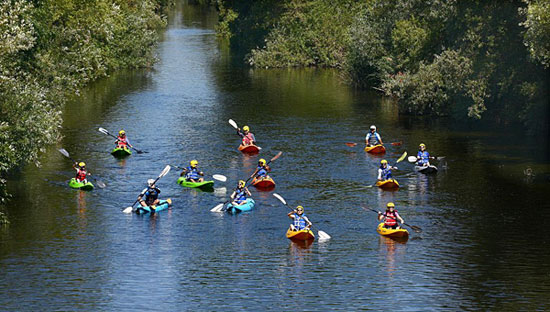
Once banned from most of the L.A. River, kayakers are now a regular summer sight. Photo/StreetsblogLA
Most Angelenos know that the Los Angeles River is making a comeback. Still, the hipsters hawking free breakfast on its banks were a surprise.
Waving their arms and proffering scrambled egg sandwiches and muffins they’d cooked on a camp stove, the group of about a dozen young people were on the bike path near Rattlesnake Park on Saturday morning, flagging down cyclists for no apparent reason beyond community building.
“They said they had done it before, and had just decided to do it again,” said one passing cyclist, a 24-year-old from Eagle Rock who’s been riding along the river near Griffith Park for years. “It seemed like they were just, like, ‘Let’s just get together and do something nice.’”
Gathering at the river to do something nice has become a trend this summer, as momentum has built around the restoration and revitalization of L.A.’s long-suffering namesake waterway.
With scores of projects already complete and a $1 billion Army Corps of Engineers plan expected to dramatically improve an 11-mile stretch between downtown and Griffith Park, a nascent but notable scene has taken hold along the once-maligned L.A. River, particularly where it has been spruced up with pocket parks, hiking trails and bikeways.
This summer, for instance, kayaking tours are being offered in public recreation areas in the Sepulveda Basin and in Elysian Valley; later this month, about 100 stand-up-paddlers and rowers will gather in the Glendale Narrows for a first-ever L.A. River Boat Race.
The Los Angeles River Corp. is offering outdoor bike-in movies along the riverbanks later this month and has its second annual Greenway 2020 10k race scheduled for early November. Meanwhile, the Elysian Valley Arts Collective will host its annual Frogtown Art Walk again next month by the river. Nearby, Elysian, an underground restaurant that materialized two years ago on the river near Atwater Village, will be up and running, legally and officially.
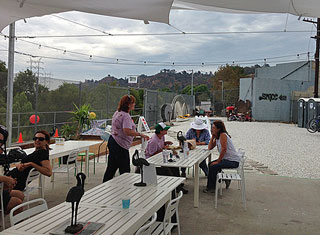
Along the L.A. River's concrete banks, The Frog spot offers food, concerts and more. Photo/Franklin Avenue Blog
Elysian is also the home of Clockshop, a non-profit arts and cultural organization, and the site for more than a few weddings during the past year. And speaking of art, be on the lookout for the L.A. Mud People, a performance art group that frequents the river both as a medium and a backdrop.
“It’s really kind of miraculous,” marveled Lewis MacAdams, president of Friends of the L.A. River, which has itself drawn thousands of passersby over the past six weeks by staging free weekend concerts at The Frog Spot, an informal venue it set up this summer on Benedict Street along the Elysian Valley bike path.
“We’ve been surprised at how many people have showed up—probably 500 or so every Saturday and Sunday,” said MacAdams, adding that FOLAR will also be sponsoring a catch-and-release fishing event next month. “People are getting interested, and looking for community.”
MacAdams sees the interest as an outgrowth of the long political fight to restore the river, which was paved in the 1930s in an attempt to tame periodic but lethal floods. Nearly 4,000 people participated this year in FOLAR’s long-running annual river cleanup, he said—a record turnout—and each cleanup has helped spread the news of the river’s revitalization and potential.
So far, MacAdams said, most of the community activities have centered around FOLAR and the Elysian Valley arts community near Frogtown. “But a lot of it also is the bicycle population,” he said. “There are more bicyclists than we imagined, and they keep coming back.”
Julia Meltzer, executive director of Clockshop and the wife of David Thorne, who runs Elysian restaurant, agreed that the riverfront has become exponentially more active.
“There’s a lot more recreation and sporting,” she said, acknowledging that the various improvements, from friendlier landscaping to paved bikeways, have created occasional conflicts among walkers, cyclists, locals and other constituencies.
Nonetheless, a first-ever, free community campout along the river that Meltzer said she helped organize over Memorial Day weekend—along with California State Parks, the Mountains Recreation and Conservation Authority, the Natural History Museum and others—was fully booked within an hour of its announcement.
“I think it’s the big buzz, and the opportunity to come down to the river’s edge legally now,” said MRCA Chief Ranger Fernando Gomez, adding that some 200 campers showed up on Memorial Day and that hundreds more have shown up this summer for MRCA river programs, ranging from free community paddles to evening weenie roasts in Marsh Park.
“It used to be that people weren’t allowed in the river without a special use permit—it wasn’t meant for recreation,” Gomez said. “People would look at the river and think it was disgusting.
“But now, they can go down in, say, a kayak, and they see that the water is actually pretty clean, and there’s a heron right over there taking off with a fish in its mouth. They see that it’s not just all about concrete anymore,” Gomez said. “It’s a river—a real live river—now and people want to be part of it.”
Posted 8/6/14




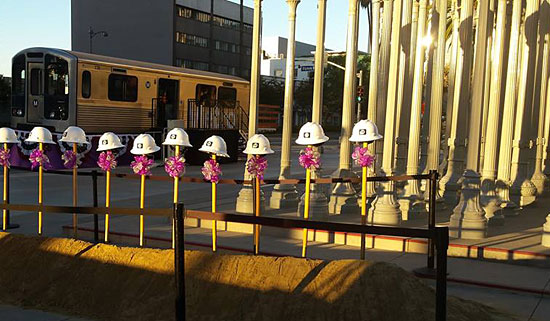

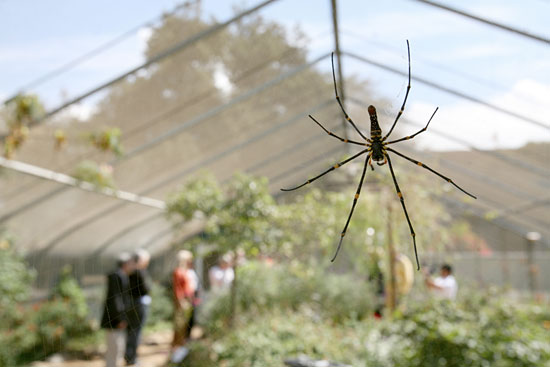
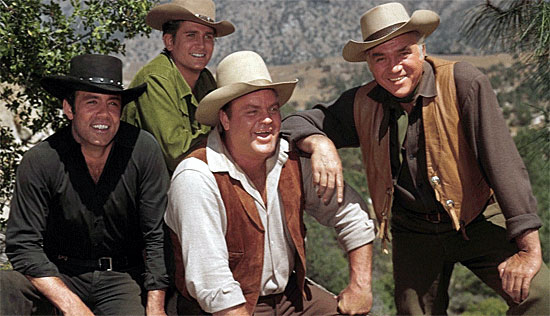

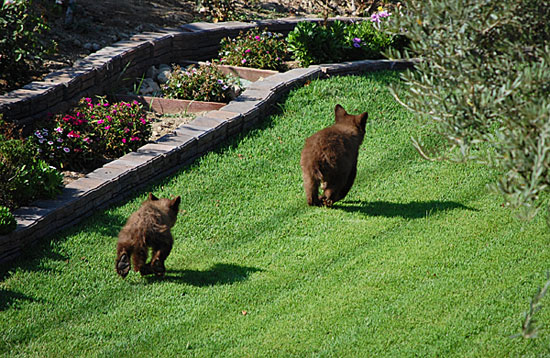

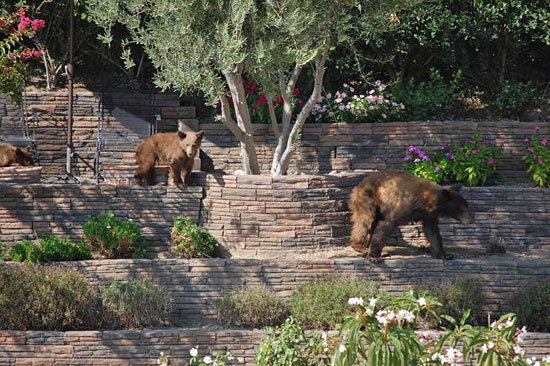
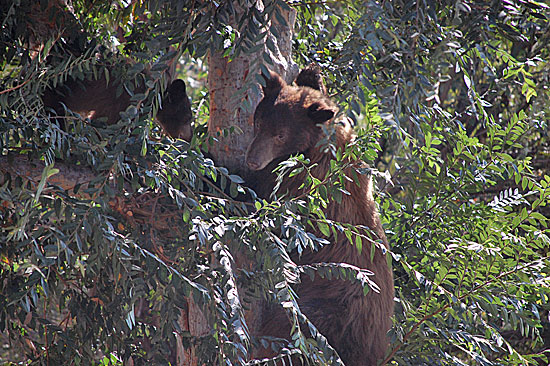
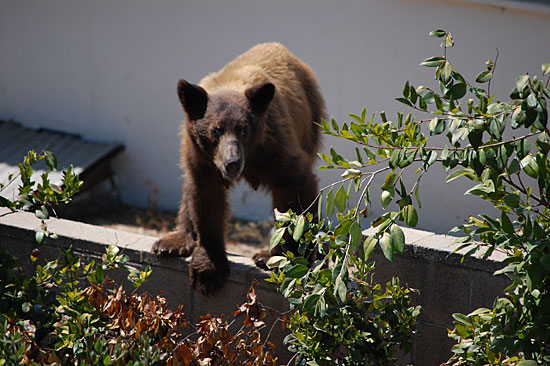
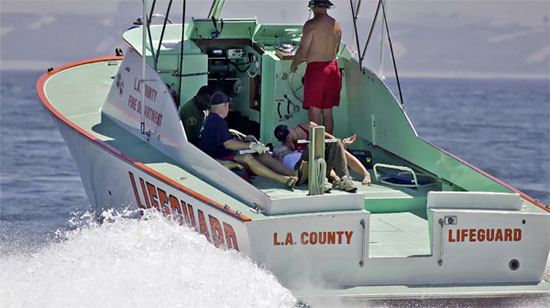
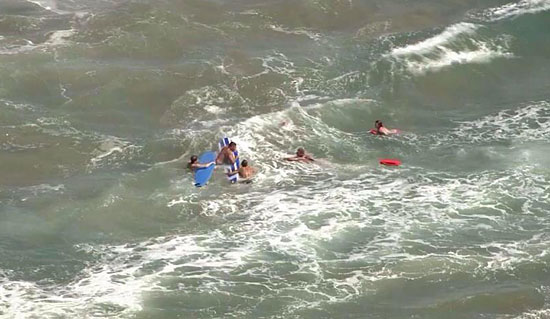
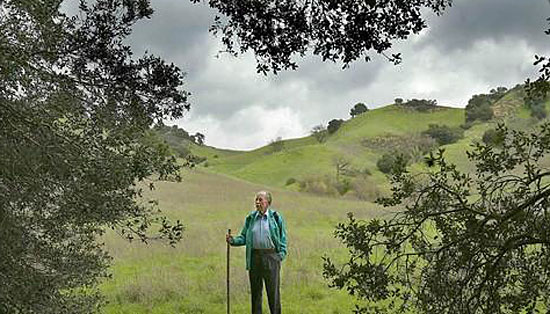
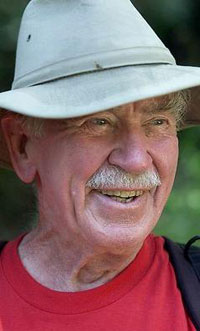
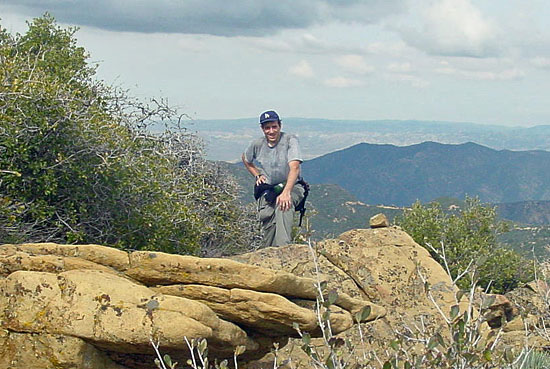
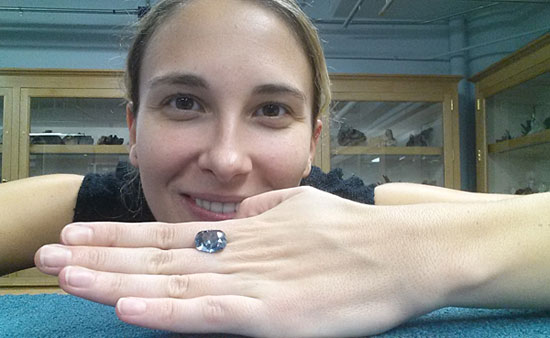

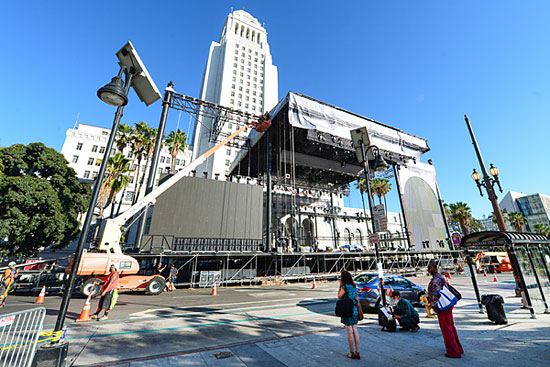
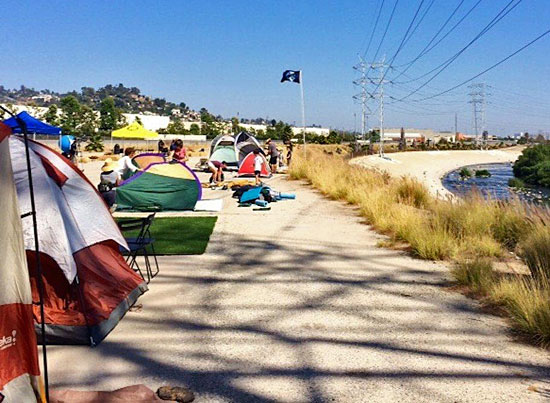





 Check for the latest closure information
Check for the latest closure information








